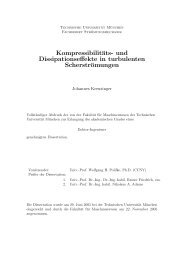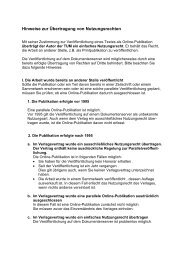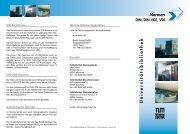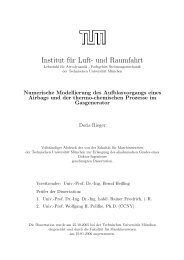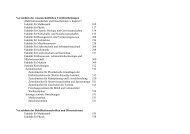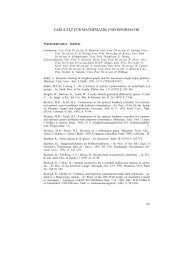LES of shock wave / turbulent boundary layer interaction
LES of shock wave / turbulent boundary layer interaction
LES of shock wave / turbulent boundary layer interaction
Create successful ePaper yourself
Turn your PDF publications into a flip-book with our unique Google optimized e-Paper software.
31<br />
Figure 3.2: Instantaneous z−vorticity component ω z in x − y section.<br />
3.2 Mean flow and statistical analysis<br />
The mean-flow characteristics for the reference section x r are summarized<br />
and compared with the experiment in table 3.1. δ 1 and δ 2 are displacement<br />
and momentum thickness, respectively. Re δ2 is the Reynolds<br />
number based on the free-stream velocity, momentum thickness and viscosity<br />
at the wall. H 12 is the shape factor. The agreement <strong>of</strong> δ 0 , δ 1 ,<br />
δ 2 , H 12 with the experiment is good. The computed skin-friction coefficient<br />
C f differs more significantly from the experiment with an uncertainty<br />
<strong>of</strong> about ±10%. However, the discrepancy is within the limits <strong>of</strong><br />
experimental-data scatter, as shown in figure 3.3. In this figure several<br />
experimental data sets C f versus Re δ2 , taken from Fernholz & Finley<br />
(1977, 1981), are shown along with our computed values and the experimental<br />
reference values at station E1. An empirical fit <strong>of</strong> the experimental<br />
data is shown by the dashed line, using a von Kármán-Schoenherr<br />
incompressible skin-friction formula<br />
C finc =<br />
1<br />
17.08(log 10 Re θinc ) 2 + 25.11log 10 Re θinc + 6.012 ,



